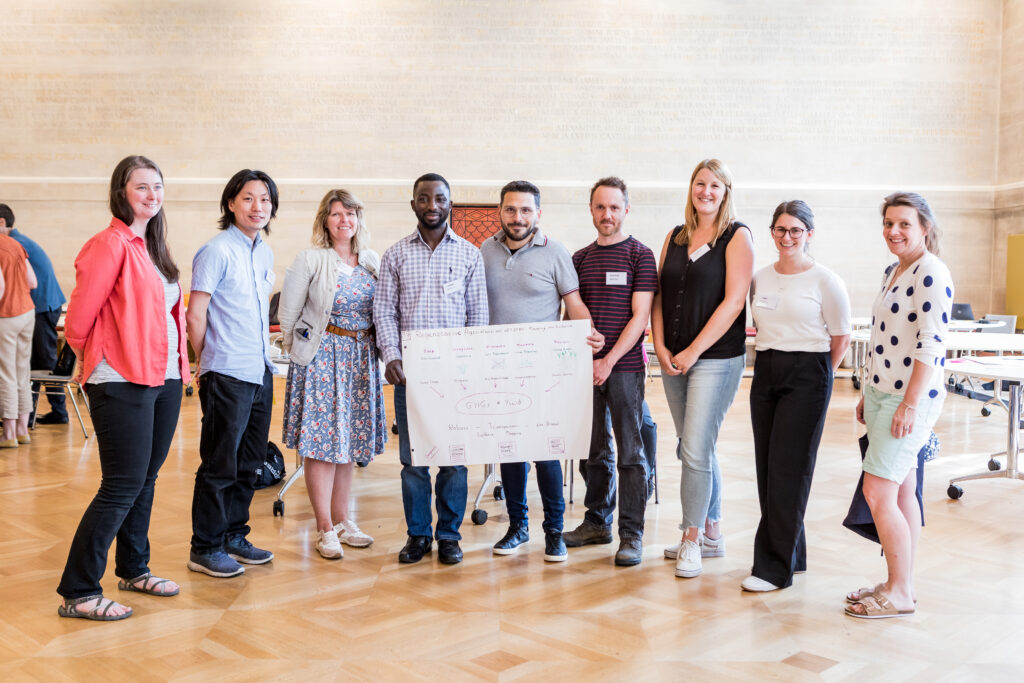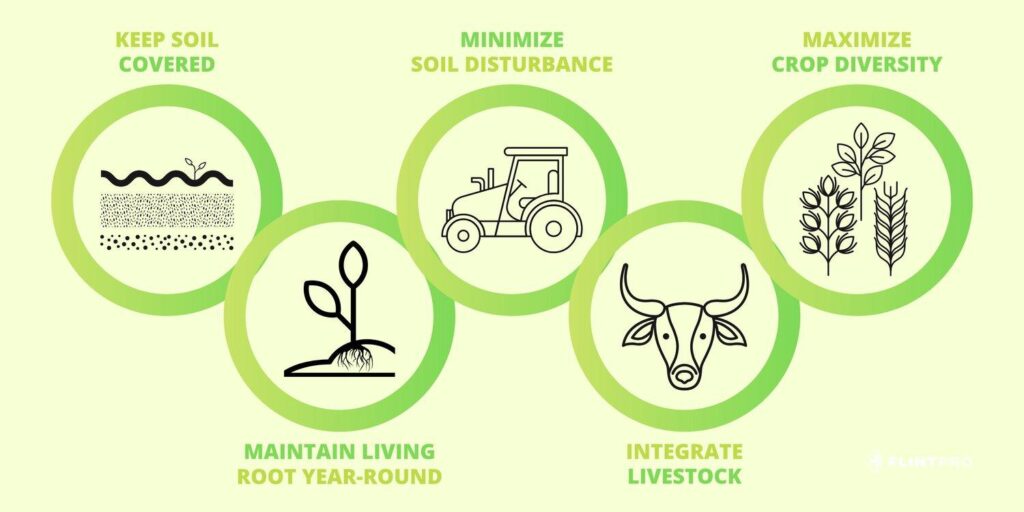Regenerative agriculture and net zero: mapping the evidence

In June the AFN Network+ ran a two-day Crucible workshop, in which researchers and food stakeholders came together to develop ideas for projects which support our mission of getting the agri-food sector to net zero. Projects competed for funding with two Scoping Studies selected as winners. One of those two winning teams was led by Dr Richard Francksen. Here he describes why his project to map the evidence around regenerative agriculture is so important.
Farmers face a major challenge trying to balance producing food, reaching net-zero, and ensuring the long-term viability of their farms. In an attempt to meet all these goals, some farmers have turned to ‘Regenerative Agriculture’ practices that aim to both sustainably produce food and contribute to the overall health of the environment.
Regenerative agriculture is a broad and flexible term, meaning different things to different people. Generally, it encompasses any farming practice which improves the environment, primarily through soil regeneration, and can be considered a ‘direction of travel’ rather than an absolute. Many of its practices are thousands of years old and the term began to appear in the scientific literature back in the early 1980s, yet its popularity across many actors in the agri-food system has greatly increased in recent years.
At the recent Crucible Event, run by the AFN Network+ in Bristol, researchers and other food system stakeholders met and formed a team to discuss how to address this lack of clear and synthesised evidence. Our team contained research expertise covering regenerative agriculture, ecosystem services, soil science, agroecology, agronomy, and livestock and crop production, and we were joined by food system stakeholders from the National Sheep Association, the Organic Farmers and Growers, Farm Carbon Toolkit, Centre for Innovation Excellence in Livestock, and National Institute of Agricultural Botany. This diverse expertise really helped us form our project proposal and consider a range of perspectives.We began with the five key principles of regenerative agriculture (see figure 1).

Against each of these five principles we matched a representative regenerative agriculture practice as follows:
- Use of cover crops (Principle: keep soil covered)
- Under sowing (Principle: maintain living roots year round)
- Minimum or zero tillage (Principle: minimise soil disturbance)
- Establishing grazing practices (Principle: integrating livestock)
- Intercropping (Principle: maximise crop diversity)
Our plan is to use a systematic mapping methodology to collate and summarise existing evidence for the impact of these five representative practices on greenhouse gas emissions and agricultural yield. We will use pre-defined search and inclusion criteria, co-developed with our food system stakeholders, to collate evidence from a variety of sources and extract data to identify patterns and gaps to inform future research, policy and practice. We will ensure that we capture evidence from the published scientific literature, as well as other sources including government and industry reports and university theses.
Our rationale for choosing these two outcomes is that reducing greenhouse gas emissions (e.g. carbon dioxide, methane and nitrous oxide) is critical to reaching net-zero, while knowledge of impacts on agricultural yields is critical for achieving sustainable and lasting change among farmers, who clearly need confidence that their outputs won’t be adversely affected to the point that their businesses become untenable.
Our project will produce three key outputs, useful for multiple actors across the agri-food system: (1) a searchable database of relevant studies; (2) an open-access scientific paper with the results of our evidence map; and (3) a set of policy briefs summarising the project findings aimed at farmers, farm advisors, policy makers and researchers across the agri-food system.
The Crucible Event in Bristol was critical for bringing our team together and formulating this project plan. Discussions on the first day allowed us to share our expertise and knowledge and identify who we needed to network with in order to create a team with complementary skills. Having a diverse team of researchers and practitioners all in the same room together was a fantastic way to ensure our ideas were feasible and relevant to the challenges the agri-food system faces at reaching net-zero. We were delighted, and very grateful to the AFN Network+ team, to be selected as one of two teams to take their project forward to help meet this huge challenge!


